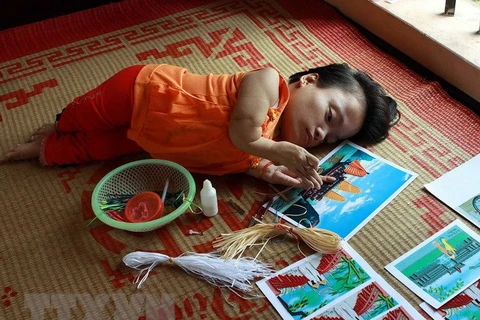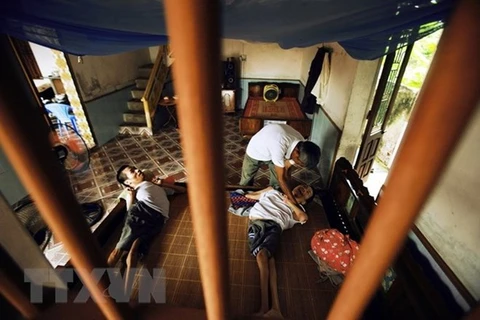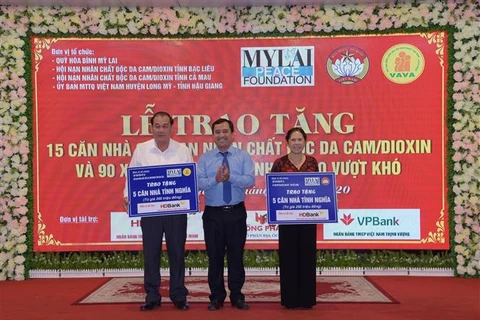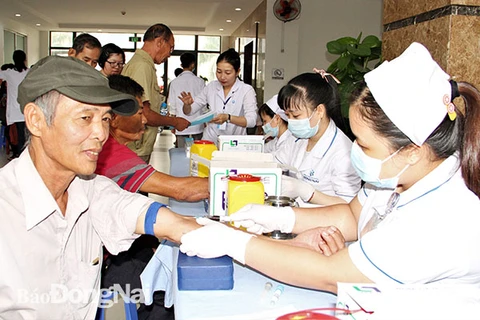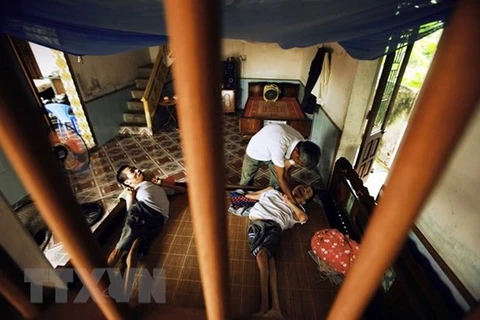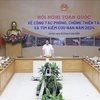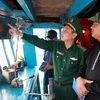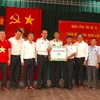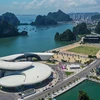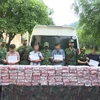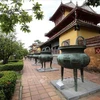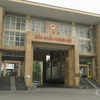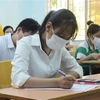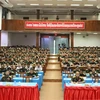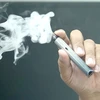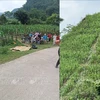
Hanoi, (VNA) – An online photo exhibition titled “Aspiration to better oneself” gives the audience, both domestic and foreign, an insight into the disastrous impacts of Agent Orange (AO)/dioxin on the environment and humans in Vietnam.
The exhibition is held on the occasion of the 59th anniversary of the AO/dioxin disaster in Vietnam (1961-2020) and the Day for AO/dioxin Victims (August 10). The event is co-organised by the National Action Centre for Toxic Chemicals and Environmental Treatment (NACCET), the Vietnam Association for Victims of AO/dioxin (VAVA), the Standing Office of the National Steering Committee on the Settlement of Post-war Unexploded Ordnance and Toxic Chemical Consequences (Steering Committee 701), the National Committee for Vietnamese Persons with Disabilities.
Opened on August 9 and available until October 9, the exhibition can be seen at several websites: trienlamdacam.vn; the portal of the Defence Ministry at mod.gov.vn, the website of the Steering Committee 701 at office701.gov.vn; the website of the chemical arm at binhchunghoahoc.vn; the website of the Social Protection Department under the Ministry of Labour, Invalids and Social Affairs at btxh.gov.vn, and the VAVA’s website at vava.org.vn.
The photos on display are arranged under seven themes, namely the toxic chemical disaster, the care of the Party and State; the care of international friends; the journey to demand justice for Vietnamese AO victims; treatment of toxic chemical residues after the war; victims’ efforts to rise above difficulties; and documentary films.
The exhibition aims to give the public both in and outside the country better understanding about the impacts of AO/dioxin on the environment and people in Vietnam.
Among the photos, there is a map showing locations of US Army aerial herbicide spray missions in South Vietnam during 1961-1971, or images of US troops spraying herbicide using buffalo turbine mounted on M113 armoured tanks or from helicopters.
The serious consequences of the toxic chemical can be seen clearly in the images of Duong Minh Chau forest (the southern province of Tay Ninh), Ma Da forest (the southern province of Dong Nai), a coconut growing village in the central province of Binh Dinh, coconut forests along the Truong Son trail, or locals in the southern province of Ben Tre dying from the toxic chemical.
A highlight of the exhibition is the journey to demand justice for Vietnamese AO victims, included precious photos of the International People’s Tribunal of Conscience in Paris in 2009, which was a milestone in the journey. The tribunal made its final judgment on May 18, 2009, concluding that the use of dioxin by the US military forces in Vietnam during 1961-1971 was a war crime against humanity.
The Tribunal found that the US Government and chemical manufacturers were well aware of the danger of dioxin which was capable of causing prolonged serious consequences not only to humans and the environment but also to the Vietnamese economy.
The US Government was guilty of using dioxin and damaging the environment, and the chemical companies were also found guilty of colluding with the US Government’s actions, the Tribunal concluded.
It asked the US Government and the chemical companies that manufactured and supplied Agent Orange to fully compensate victims and their families, rehabilitate the environment and eradicate any dioxin from Vietnam and its waters, especially hot spots around former US military bases.
A part of the exhibition was dedicated to efforts to decontaminate the residue of the toxic chemical made by both the armed forces and civilian organisations after the war, in order to restore a safe life for local residents.
More importantly, the exhibition brought to audiences images of AO victims working hard to overcome their fates with the love for life and aspiration to affirm themselves despite illnesses or deformities caused by the toxic chemical.
The care of the Party and State for AO victims, along with support of the international community, is also highlighted through many photos.
The exhibition also serves as an appeal to organisations and individuals both at home and abroad to continue joining hands in addressing the heavy consequences of chemical warfare in Vietnam and helping bring a better life to victims of AO/dioxin.
The US army sprayed some 80 million litres of toxic chemicals, 61 percent of which was Agent Orange containing 366 kilograms of dioxin, over nearly one quarter of the total area of southern Vietnam from 1961 to 1971.
Preliminary statistics showed that 4.8 million Vietnamese people were exposed to AO/dioxin, and about 3 million people became victims. Tens of thousands of people have died while millions of others have suffered from cancer and other incurable diseases as consequences of exposure. Many of their offspring have also suffered from birth deformities./.

